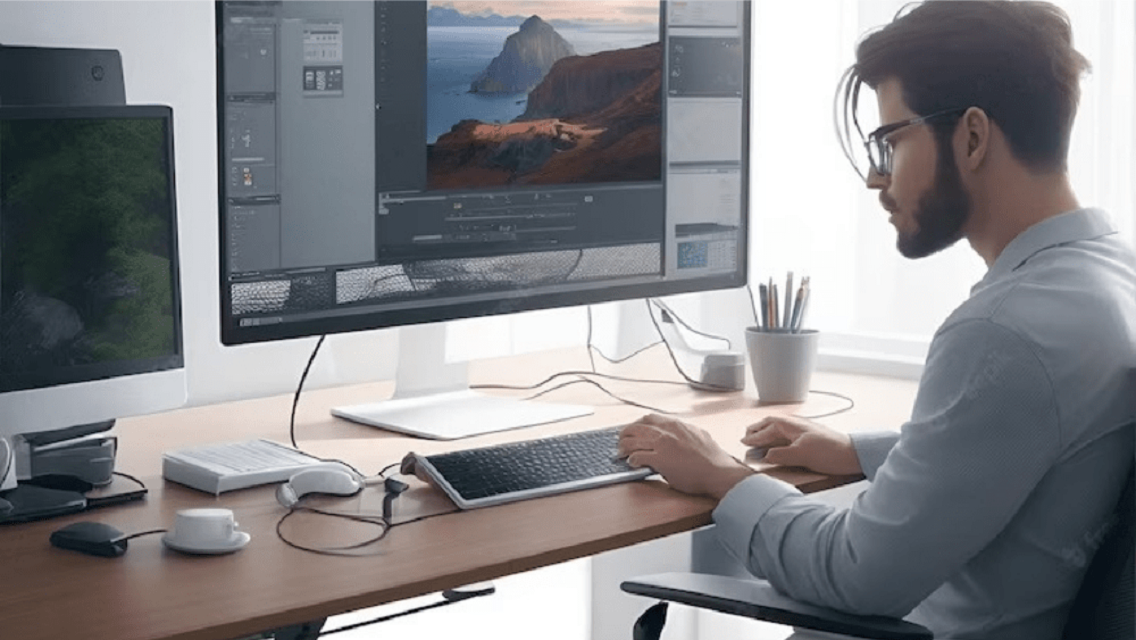Animating Imagination: Essential Tips for VFX and Animation Courses
Animation and visual effects (VFX) are two dynamic fields that bring imagination to life on screen. From captivating characters to breathtaking environments, animation and VFX play integral roles in shaping the visual narratives of films, television shows, video games, and advertisements. If you’re passionate about bringing stories to life through animation or VFX, enrolling in a course can provide you with the necessary skills and knowledge to pursue a career in these exciting industries. In this guide, we’ll explore essential tips for navigating VFX and animation courses, including the key differences between the two disciplines.
Understanding the Difference Between VFX and Animation
Before diving into the tips for VFX and animation courses, let’s clarify the distinction between the difference Between VFX and Animation.
- Animation: Animation involves creating the illusion of movement through the rapid display of a sequence of static images or frames. Animators bring characters, objects, and environments to life by manipulating their positions, shapes, and attributes over time. Animation can be 2D or 3D and encompasses a wide range of styles and techniques, including traditional hand-drawn animation, computer-generated animation, stop-motion animation, and motion graphics.
- Visual Effects (VFX): Visual effects, on the other hand, involve the integration of computer-generated imagery (CGI) with live-action footage to create realistic or fantastical scenes that would be impractical or impossible to capture on camera. VFX artists enhance visuals, add elements such as creatures, environments, or special effects, and manipulate reality to tell compelling stories. VFX can range from subtle enhancements to elaborate digital environments and complex simulations.
While animation and VFX are closely related and often overlap in practice, they represent distinct disciplines with their own techniques, tools, and applications within the broader field of digital media production.
Essential Tips for VFX and Animation Courses
Now that we’ve clarified the difference between animation and VFX, let’s explore some essential tips for success in VFX and animation courses.
1. Research and Choose the Right Course:
Before enrolling in a VFX or animation course, take the time to research and evaluate your options. Consider factors such as the curriculum, faculty expertise, industry connections, facilities, and student testimonials. Choose a course that aligns with your interests, goals, and learning style, whether you’re interested in 2D animation, 3D modeling, VFX compositing, or motion graphics.
2. Master the Fundamentals:
Building a strong foundation in the fundamentals is essential for success in both VFX and animation courses. Focus on mastering the principles of design, animation principles (such as timing, spacing, and squash and stretch), storytelling, and technical skills (such as software proficiency and digital tools). A solid understanding of the basics will serve as a solid framework for your future growth and development as an animator or VFX artist.
3. Practice Regularly:
Practice is key to mastering the craft of animation and VFX. Set aside dedicated time each day or week to work on projects, experiment with different techniques, and refine your skills. Whether it’s sketching character designs, creating storyboards, animating scenes, or compositing visual effects, regular practice will help you improve your skills, build confidence, and develop your unique artistic voice.
4. Embrace Feedback and Critique:
Seeking feedback and critique from instructors, peers, and industry professionals is essential for growth and improvement as an animator or VFX artist. Be open to constructive criticism, and use feedback as an opportunity to learn, refine your work, and push yourself to new heights. Participate in class critiques, join online forums or communities, and attend industry events to connect with fellow artists and receive valuable insights into your work.
5. Build a Diverse Portfolio:
Your portfolio is your calling card in the world of animation and VFX. Showcase your best work, including projects, animations, and visual effects sequences that demonstrate your skills, creativity, and technical proficiency. Include a variety of projects that highlight different styles, techniques, and subject matter to showcase your versatility and range as an artist.
6. Stay Updated on Industry Trends:
The field of animation and VFX is constantly evolving, with new technologies, techniques, and trends emerging regularly. Stay updated on the latest developments in the industry by following industry blogs, forums, and social media channels, and invest in continuing education and professional development opportunities to stay ahead of the curve. Keep an eye on emerging technologies such as virtual reality (VR), augmented reality (AR), and real-time rendering, which are shaping the future of animation and VFX.
7. Network and Collaborate:
Networking is essential for success in the animation and VFX industries. Build relationships with fellow students, instructors, alumni, and industry professionals through networking events, online communities, and social media platforms. Collaboration with peers on projects can also provide valuable learning opportunities and help you expand your network. Attend industry events, workshops, and conferences to meet other artists, learn from industry experts, and discover new opportunities for collaboration and growth.
Conclusion
In conclusion, enrolling in a VFX or animation course is an exciting first step towards pursuing a career in the dynamic and creative fields of animation and visual effects. By researching and choosing the right course, mastering the fundamentals, practicing regularly, embracing feedback and critique, building a diverse portfolio, staying updated on industry trends, and networking with fellow artists and professionals, you can set yourself up for success in the competitive world of animation and VFX. Whether you’re passionate about bringing characters to life through animation or creating immersive visual effects for film and television, the tips outlined in this guide will help you navigate your journey and unlock your full potential as an animator or VFX artist.






